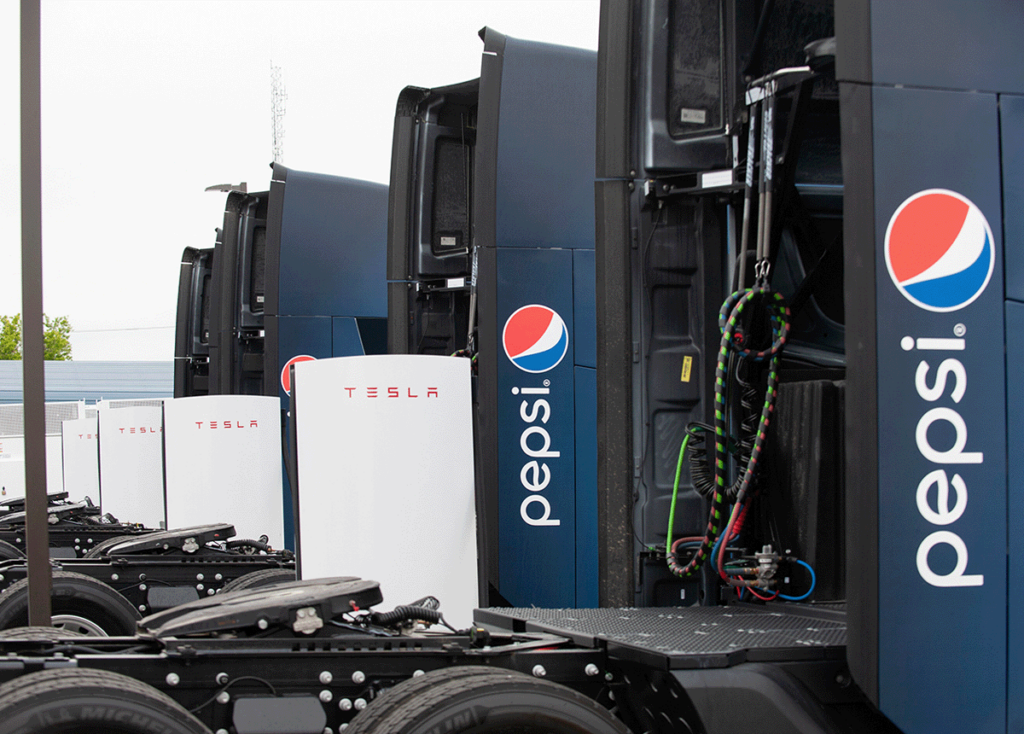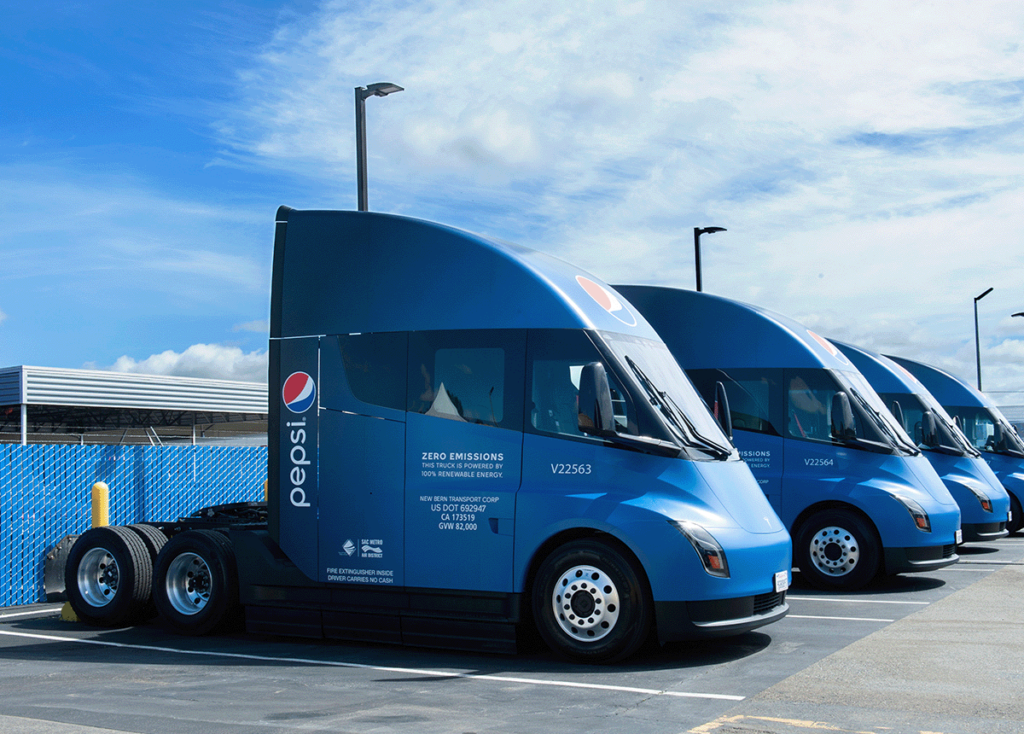PepsiCo introducing a sustainable generation of trucks
The original Pepsi Challenge marked the height of the cola wars, as the beverage maker invited consumers to participate in blind taste tests. But the goal of sustainable transportation may represent its biggest challenge yet.
PepsiCo wants to slash direct emissions by 75% as early as 2030 – and generate net-zero emissions by 2040 — leading to some of the broadest rollouts of zero-emissions trucks in the U.S.
It’s now delivering soda and snacks using battery-electric versions of 37 straight trucks, 18 over-the-road tractors, 35 delivery tractors, more than 30 support and service vehicles, and 178 delivery vans. Five hundred more eTransits will be deployed this year.

They’re plugging into infrastructure that includes more than 300 Level 2 19.2-kilowatt chargers, more than 30 DC fast chargers providing 24 to 240 kilowatts, and eight megawatt charging systems delivering 750 kilowatts.
And they’ve delivered plenty of lessons in the process as it looks to address more than 500-plus facilities.
“Charging is not as simple as plugging in,” said Dejan Antunovic, electrification program manager, during a presentation to a standing-room crowd at Move America 2023. In terms of charging alone, costs such as time-of-use rates, demand charges, seasonal rates, and charge management plans all need to be considered.
Testing the Tesla Semi
The highest-profile trucks in the network also include some of the first Tesla Semis, which the company says are already delivering promising results. Twenty-one of the trucks are hauling beverages on daily deliveries, on city routes and over longhaul distances, out of a bottling production and distribution facility in Sacramento, Calif.
“We do run these to near max capacity,” Antunovic said.
Longhaul runs of 250 and 520 miles (400 and 837 km) include gross vehicle weights of up to 82,000 lb., while 18 routes include diminishing loads that travel less than 75 miles (120 km) per day. And the vehicles are supported with four 750-kilowatt Tesla chargers supplemented by a Tesla Megapack Battery Energy Storage System.
Ari Kahn, manager of carbon-free transportation for Rocky Mountain Institute, said competing OEMs are taking notice of the rapid charging times reported during an ongoing Run on Less demonstration with the Tesla Semis. On the first day, one of the trucks made four deliveries over 841 miles (1,354 km), traveling 400 miles per charge, and working 17 hours.
“This truck is doing more miles per day than any other electric truck I know of and more than I think we thought was possible,” he said in a separate Move America 2023 session of his own.

Unique opportunities
But each PepsiCo electric vehicle deployment has presented unique opportunities and lessons.
It took four years to electrify a snack manufacturing plant in Modesto, Calif., but that has slashed related fleet emissions by 91%, Antunovic said. Everything from Li-Ion forklifts to box trucks, yard tractors, and tractors are plugging into the location’s infrastructure that includes solar and battery storage. There’s a CNG station delivering renewable natural gas to 38 tractors, too.
But when 14 Freightliner eCascadias were ready in Torrance, Calif., the related charging infrastructure wasn’t ready. So PepsiCo has established temporary chargers until the permanent infrastructure is online in Q1 2024.
In the process, the company found that it could support all the trucks with just three chargers.
The all-electric depot
Meanwhile, a Frito Lay project in Charlotte, N.C., introduced 28 Ford eTransits, each with a Level 2 charger – creating the company’s first all-electric depot.
“There’s risk in that, and with that risk you have to consider what do you do if the trucks can’t charge,” Antunovic said. Drivers might forget to plug in, or the overnight charging might fail to work. That’s why the business added a DC fast charger able to top off a vehicle in 15 minutes rather than three hours.
Further north in Queens, N.Y., a Frito Lay facility has been equipped with 31 Ford eTransits with just six Level 2 chargers that were deployed in July. It will have more than 60 of the vehicles by the end of this year.
While the location doesn’t have much space for parking, most of the routes in the dense urban area are limited to 25 to 30 miles (40 to 50 km) per day. PepsiCo realized the trucks don’t need to be charged every day since the eTransits can travel more than 100 miles (160 km) on a charge, he said.
“We have smarter trucks. We have smarter fueling methods,” Antunovic added. “Look at the infrastructure and kind of twist it or leverage it in a way that works for your business.”
Have your say
This is a moderated forum. Comments will no longer be published unless they are accompanied by a first and last name and a verifiable email address. (Today's Trucking will not publish or share the email address.) Profane language and content deemed to be libelous, racist, or threatening in nature will not be published under any circumstances.